Pot up herbs for fragrant, fresh green leaves indoors in winter. Herbs set on a sunny window sill through the winter can be used at any time.
While herbs are at their best in a sunny garden, many will grow quite well in containers indoors. When winter comes there is often no choice but to bring herbs indoors where they can thrive and continue to produce fresh, fragrant leaves for kitchen use.
Herbs easy to grow in pots indoors include anise, basil, bergamot, borage, calendula, caraway, chamomile, chervil, chives, coriander, dill, lemon balm, lemongrass, pot marigold, marjoram, nasturtium, parsley, peppermint, rosemary, sage, summer savory, and thyme.

Ways to grow herbs indoors
• Annual herbs can be started fresh from seed in the fall. Sow seeds in 3- to 4-inch (7.6-10cm) pots so they will have room to grow through the winter. Annual herbs include anise, basil, borage, chamomile, chervil, coriander, dill, fennel, pot marigold, sweet marjoram, and summer savory.
• Perennial herbs like sage, chives, and rosemary can be started from cuttings or division. Take 4-inch (10cm) cuttings and root them singly in pots. Cuttings should be taken from new growth. Keep cuttings moist to encourage roots to grow.
• Perennial or annual herbs growing in garden soil in the summer can be potted up for winter indoors. Leave the plants in their new pots outdoors in a shady spot for 1 week before bringing them indoors; this will allow them to adjust to the change in light. Be sure to pot up herbs into containers large enough to accommodate their root system.
• Herbs growing in containers year-round can simply be moved indoors when winter comes. Again be sure to help them adjust to the change in light by setting them in the shade for a week before bringing them indoors.
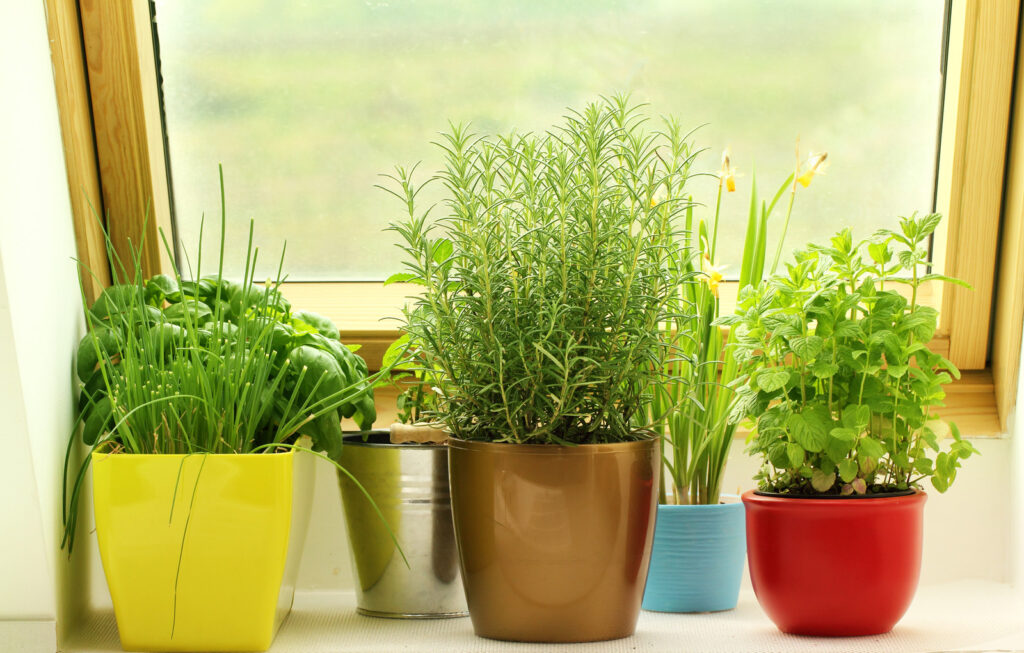
What herbs need indoors
Light
Herbs need plenty of light each day. A sunny window is best. Herbs also can be set under fluorescent lights; set the plants 6 to 8 inches (15-20cm) away from the lights.
Temperature
Most herbs want daytime temperatures between 60 and 70°F (15.6-21°C) with cooler temperatures of 50 to 65°F (10-18°C) at night. However, most herbs will survive at a constant temperature.
Water
Water herbs thoroughly then allow the soil to nearly completely dry before watering again. Don’t overwater. If humidity is low, spray plants with a light mist a couple of times a day.
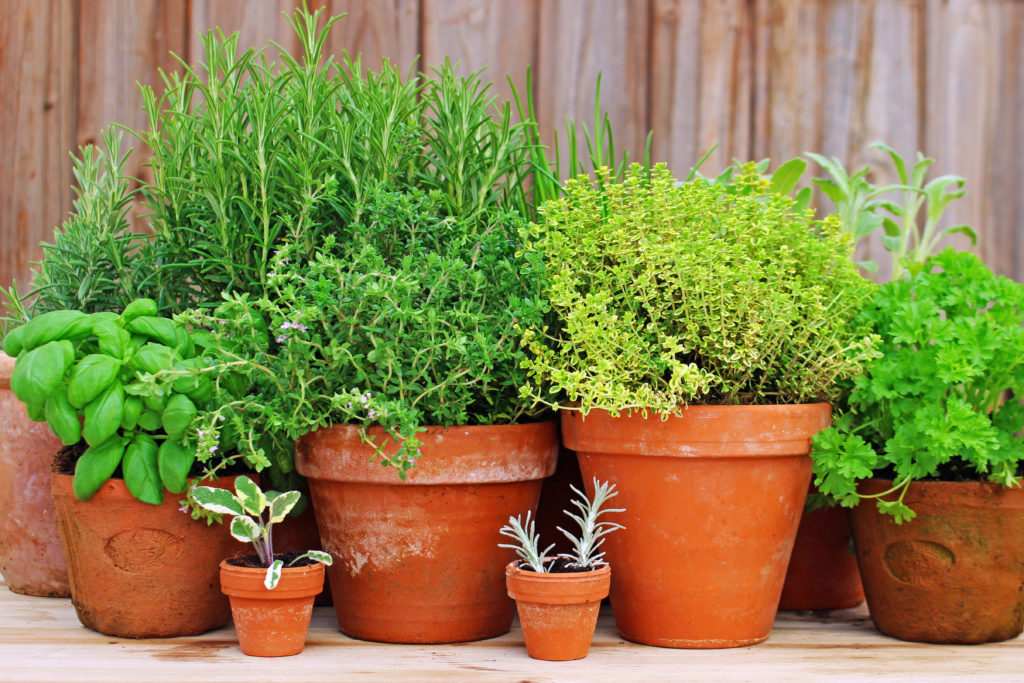
Overwintering herbs outdoors
Mints, oregano, and tarragon are hardy perennial herbs that can survive outdoors in winter—even under snow. (But if you want to use them fresh through the winter, divide and pot them up to bring inside.) Bay, rosemary, lavender, pineapple sage, and lemon verbena are tender perennials that will take some frost but their roots will be killed off outdoors if the temperature dips below 15°F (-9.4°C).
The best protection or herbs outdoors in winter is a plant blanket or a blanket of snow. Plant blankets are made from spun poly material and can be purchased at most garden shops.
Perennial herbs outdoors in winter need protection from the drying effects of winter wind. Besides plant blankets, you can cover herbs with evergreen boughs or surround them with burlap-covered frames. Small herbs can be covered with straw or leaves when the soil freezes. Remove the mulch gradually in spring.
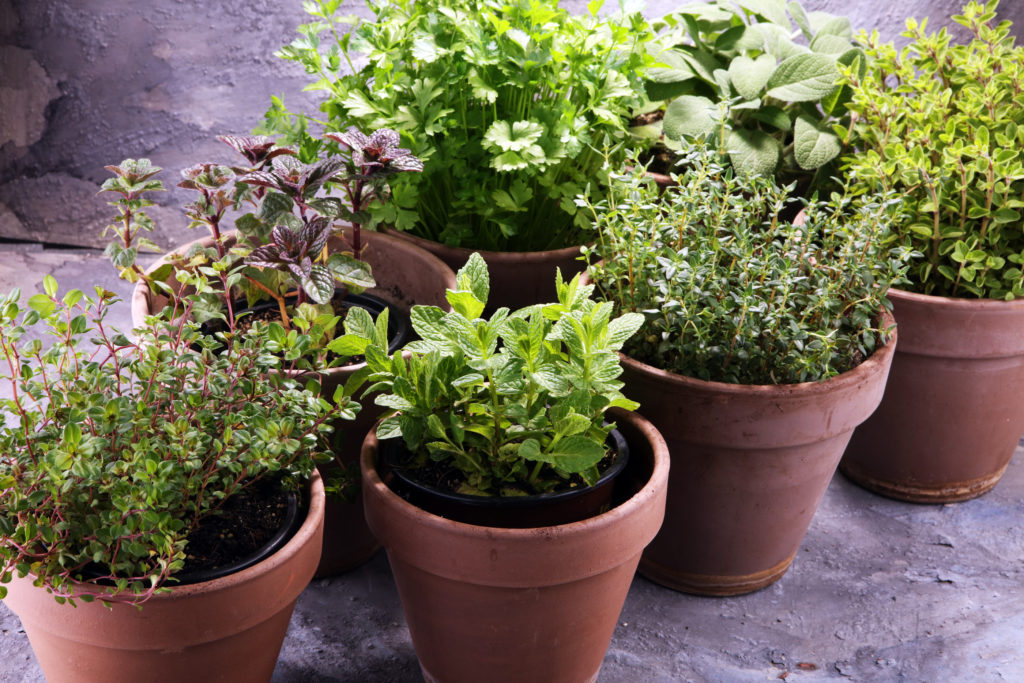
Growing herbs indoors frequently asked questions
Here are common questions asked about growing herbs indoors:
Do herbs grow well indoors?
Herbs can be grown indoors if the conditions are right. Here are the basics: (1) daytime temperature of 70°F (21°C) is acceptable but 60° (15°C) is better; night temperature of not over 55°F (12°C) is best; (2) plenty of light and sunshine; (3) sufficient humidity—set herbs pots on a tray of pebbles filled with water; (4) good air circulation; (5) regular water—no drying out of the soil but no sogginess either. Meeting these requirements may be difficult in the average centrally heated home. If you can, grow herbs in a plant room, cool window, or lean-to greenhouse.
What herbs can I grow in a sunny kitchen window?
Annuals: parsley, sweet marjoram, basil, anise, coriander. Perennials: mint, chives, thyme, sage, lemon balm, tarragon. Tender perennial shrubs: scented geraniums, lemon verbena, rosemary.
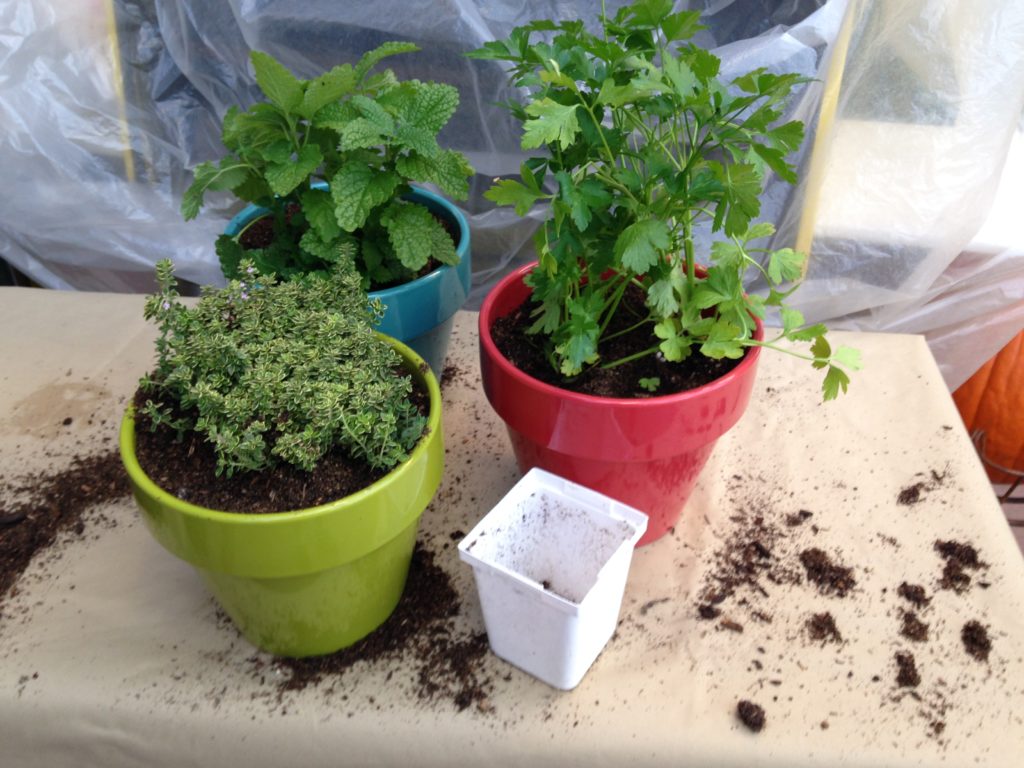
What herbs can I start from seed?
It’s easiest to start herbs outdoors before the weather gets too cold. From seed, it’s easy to grow sweet marjoram, parsley, basil, anise, and coriander.
What herbs are best grown from starts or transplants?
Rosemary, lemon-verbena, tarragon, mint, chives, thyme, sage, and lemon balm are perennials best grown from starts or transplants. You can purchase starts at a garden center or you can start plants from seed outdoors or from cuttings before you bring them indoors.
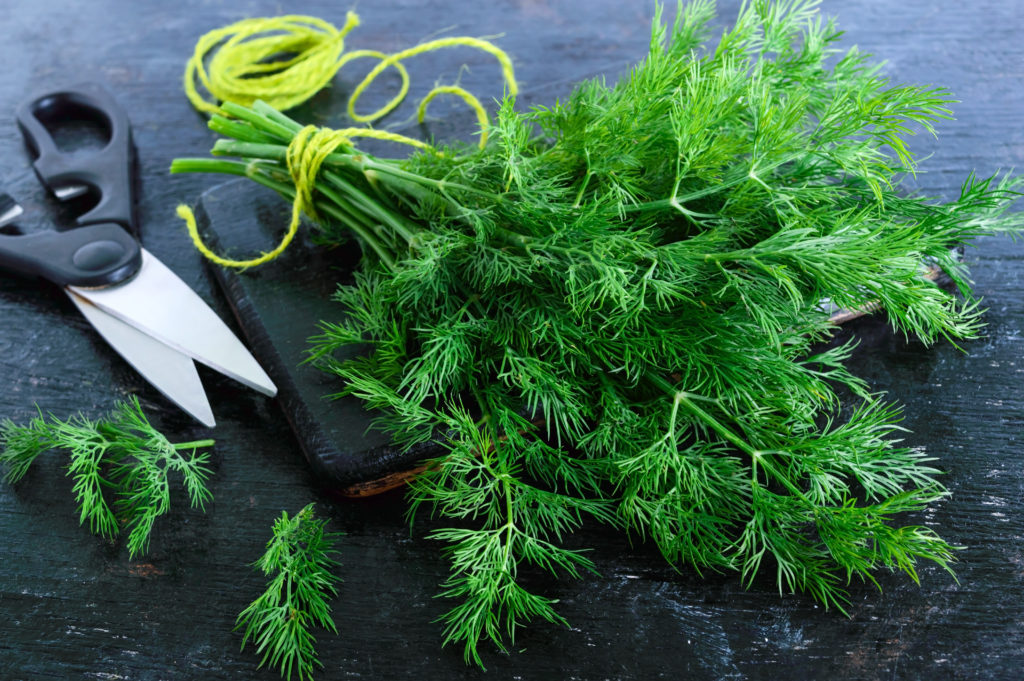
How do I start herbs from cuttings?
Root cuttings in moist sand or vermiculite. Woody herbs such as rosemary are easy to start from cuttings.
What soil is best for growing herbs indoors?
Purchase a potting mix at the garden center. To make your own potting mix use three parts good garden soil and two parts sand or Perlite with a teaspoon of lime added to a 5-inch pot.
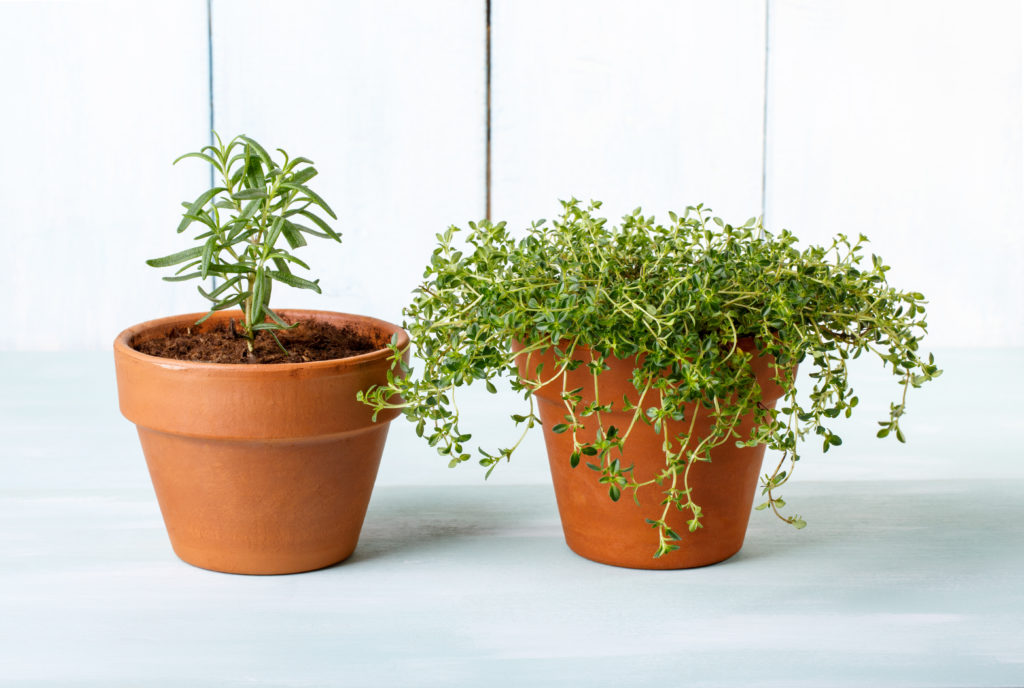
Can I grow chives indoors in winter? If so, how?
Chives do well in a kitchen or plant room. Bring in a clump of bulbs from the garden. Grow them in a bulb pan of light potting soil. Cut back the foliage and let new growth start. Grow chives in a sunny window at a low temperature—preferably 55°F. Keep the soil on the dry side.
Can parsley be grown in the house during the cold months?
Yes, bring an established plant indoors: cut back the foliage, lift the plant roots and all, and pot it up to bring indoors. Give the plant plenty of light with a temperature very close to 55°F. Don’t overwater and don’t over-fertilize. Parsley that becomes pale and leggy probably lacks light or is being grown in conditions too warm.
How should I water herbs growing indoors?
Be careful with watering. Keep the soil just moist to nearly dry. Soggy soil will kill herbs. With a little practice, you can water by the weight of the container or the feel of the soil.
Related articles:
Best Herbs for Container Growing
Planning the Home Fruit Garden
Garden Planning Books at Amazon:
- Vegetable Garden Almanac & Planner
- Kitchen Garden Grower’s Guide Vegetable Encyclopedia
- Vegetable Garden Grower’s Guide
- Tomato Grower’s Answer Book















